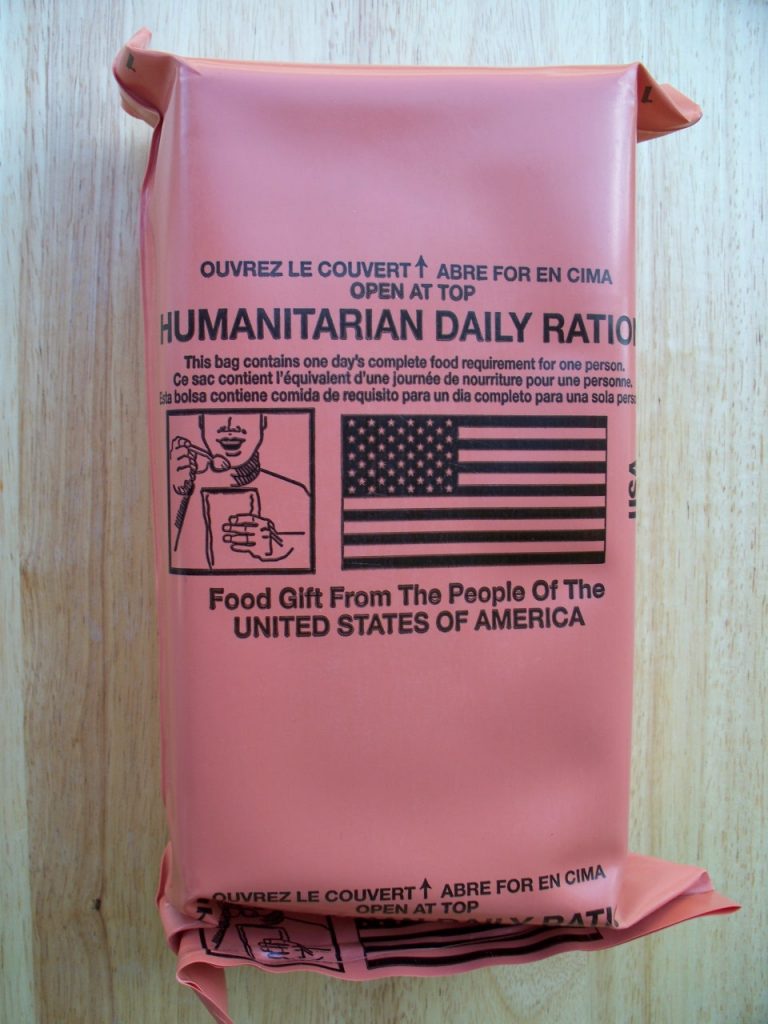
HDRs are a spin-off of MREs. They were developed as a means of feeding large populations of displaced persons or refugees under emergency conditions. A single HDR is designed to provide a full day’s sustenance to a moderately malnourished individual (as opposed to MREs, where you need three per day to feed a soldier in the field). HDRs also differ from MREs in that they contain no animal products or by-products so as to be acceptable to a wide range of consumers with religious and dietary restrictions. Each HDR contains 2200 calories.
Humanitarian Rations were implemented in response to customer requests for specific feeding requirements for large groups of people. These rations are packaged such as to withstand extreme environmental conditions and to allow air drops when necessary.
The components are designed to provide a full day’s sustenance to a moderately malnourished individual. In order to provide the widest possible acceptance from a variety of potential consumers with diverse religious and dietary restrictions from around the world, the HDR contains no animal products or animal by-products, except that minimal amounts of dairy products are permitted. Alcohol and alcohol-based ingredients are also banned. The meal bag is similar to the MRE meal bag except that it is a salmon color and it contains graphics demonstrating how
to open the bag and that the contents should be eaten. Again, the shipping container is the same as the MRE, except that it holds ten meal bags and contains markings and graphics specific to the HDR.
The net weight per case is 25 lbs and 1.02 cubic feet, while each pallet weighs 1,237 lbs and is approximately 58.1 cubic feet.
SO you might be asking “What’s in it?”
Since the meal is designed as a complete day’s supply of food, a minimum of two entrees is provided in each meal bag. Complementary components are also included to provide the balance of the daily nutritional requirements that call for not less than 2200 calories, broken down as 10-13% protein, 27-30% fat, and not less than 60% carbohydrates. A spoon and a non-alcohol based moist towelette are the only non-food components in the meal bag.
You’ll see a lot of pictures of HDRs and you may be wondering, “What’s up with the colors? Why are some bags yellow and some bags red (technically salmon)?”

The short answer to that is that during Operation Enduring Freedom in 2001, the United States began airdropping millions of HDRs all over Afghanistan. At the time, the HDRs were yellow. Unfortunately, certain unexploded cluster bomb munitions were also colored yellow (news item here) and there was a concern that encouraging people to go out into fields and pick up the yellow objects might be a bad idea. So in November 2001, the color was changed.
This has you hungry doesn’t it? Well I have some good news for you, you can get some from us right now!
https://aimsurplus.com/products/humanitarian-daily-ration-two-entrees
